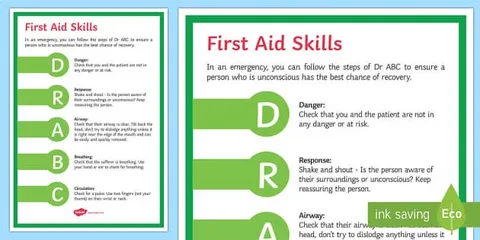In today’s fast-paced world, we teach students to code, debate, and solve equations—but how often do we teach them to respond when someone’s choking, bleeding, or unconscious?
Most schools do an excellent job of preparing students academically. But when it comes to preparing them for real-life emergencies, there’s a glaring gap. That’s exactly why first aid certification is important for students.
Whether it’s helping a friend who’s fainted during PE, responding to a sibling’s injury at home, or staying calm when an allergic reaction strikes—first aid skills give students the confidence and competence to act, not panic.
In this post, we’ll dive into why first aid certification matters at the student level, what they learn, how it impacts their mindset, and what schools and parents can do to make it happen.
Do Students Really Need First Aid Certification?
Let’s consider a simple truth: emergencies don’t discriminate by age.
Students are present at sports practices, field trips, part-time jobs, crowded cafeterias, and summer camps—places where slips, cuts, fainting, and even cardiac events can happen. First aid training equips students with quick decision-making skills and calm-under-pressure thinking that stay with them long after graduation.
Still wondering if it’s worth it? This detailed guide explains why first aid certification is important for students, and it’s packed with scenarios that make a strong case for bringing this into every school and youth program.
What Students Learn: More Than Band-Aids
First aid training isn’t just about wrapping gauze or applying a cold compress. It teaches a mindset—one that combines awareness, responsibility, and calm in the face of stress.
Here’s a glimpse of what a certified student typically learns:
- How to perform CPR and use an AED
- What to do if someone is choking or stops breathing
- How to manage burns, cuts, sprains, and fractures
- When and how to call emergency services
- How to stay focused and reduce panic in critical situations
These skills are practical, actionable, and life-ready. And they’re just as important as anything taught in the classroom.
What Happens When Students Are Certified?
First aid certification doesn’t just teach how to save lives—it changes how students think, act, and interact. Let’s break down the bigger impact:
Confidence in Crisis Situations
Knowing what to do in an emergency transforms fear into clarity. A certified student won’t hesitate when someone needs help—they’ll take charge. That confidence naturally extends into academics, social situations, and leadership roles.
More Compassionate Behavior
When you learn how to help people physically, you start noticing when others need emotional support too. Students who go through first aid training tend to be more empathetic, attentive, and community-minded.
A Boost for College and Job Applications
Whether you’re applying to a college pre-med track, hoping to work at a daycare, or volunteering at a summer camp—first aid certification stands out. It’s not just a skill. It’s a signal that you’re dependable, proactive, and mature.
A Safer School Environment
Schools benefit too. With more certified students around, the overall safety net expands. Teachers and staff feel supported, and emergencies can be handled faster and more effectively.
Parents and Schools: Here’s How to Make It Happen
You don’t need a nurse on staff or a big budget to get started. Online platforms like SimpleCPR offer flexible, affordable first aid and CPR courses that students can complete from anywhere.
Here’s what you can do:
- Introduce certification programs in health or PE classes
- Organize optional weekend workshops
- Encourage certification for student leaders, athletes, and volunteers
- Partner with online training providers for school-wide access
- Integrate it into your school’s safety or wellness initiatives
Even certifying just 10% of your student population can create a lasting shift in school culture.
Final Thoughts: First Aid Is a Lesson Worth Teaching Early
So, why first aid certification is important for students?
Because it gives them more than knowledge. It gives them control in the chaos, readiness in uncertainty, and a powerful sense of purpose. It builds better students, stronger communities, and future adults who are prepared to help instead of freeze.
And in today’s world, that’s a life lesson we can’t afford to skip.

